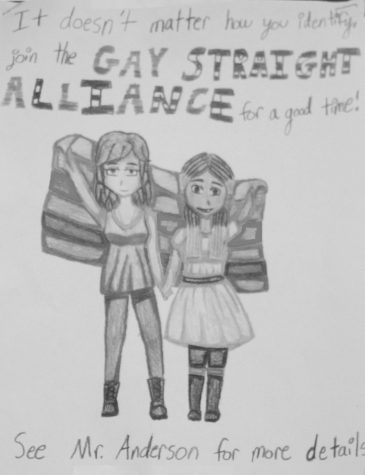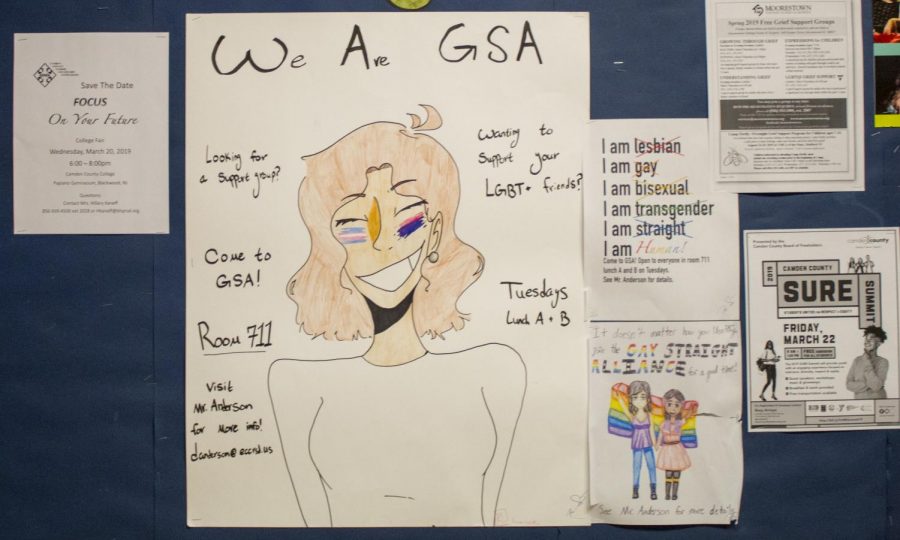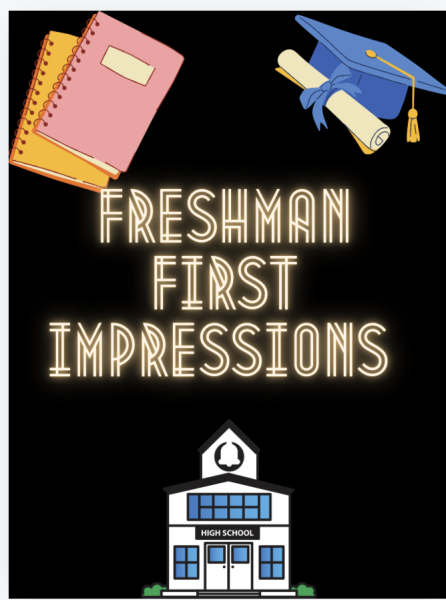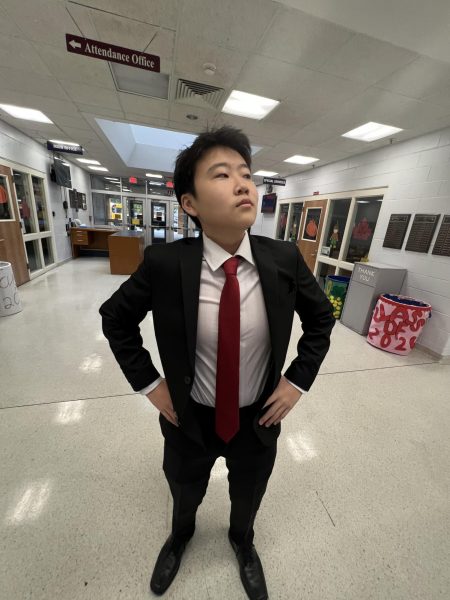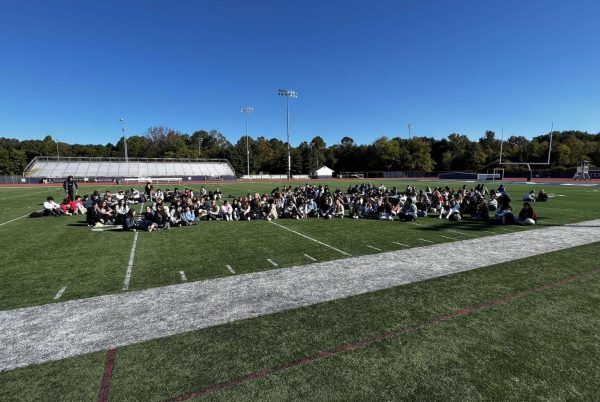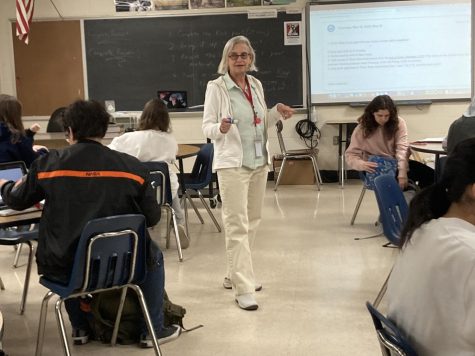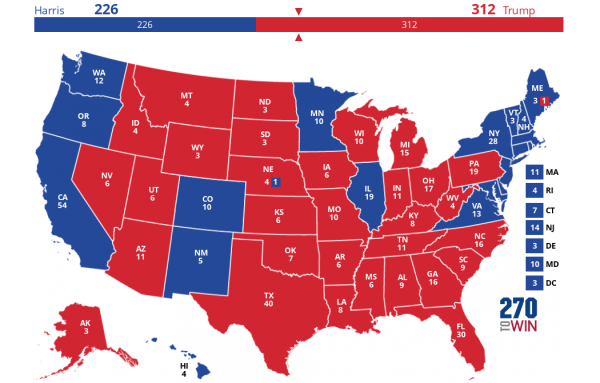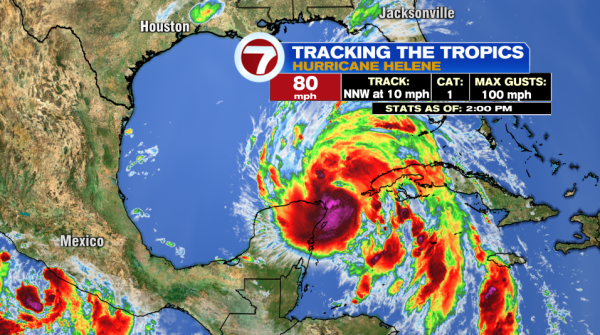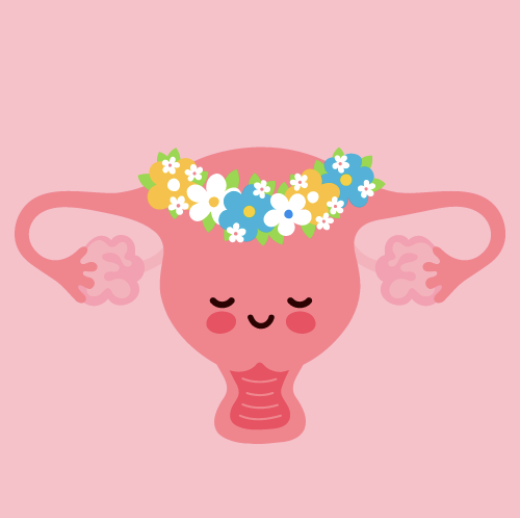LGBTQ education legislation impacting all New Jersey schools
Poster can be found outside of Guidance, promoting the Gay Straight Alliance, which meets on Tuesdays at Lunch A & B in Room 711.
New Jersey Governor Phil Murphy signed thirty bills, but one piece of legislation in has been grabbing headlines.
Law S1569 requires schools across New Jersey to “include instruction, and adopt instructional materials, that accurately portray political, economic, and social contributions of persons with disabilities and lesbian, gay, bisexual, and transgender people.”
How these lessons will be taught is in the hands of individual school districts.
Lawmakers and activists alike are overjoyed. The law hopes to promote inclusivity. Many believe that this will open students’ eyes to the vitality of tolerance.
Murphy’s spokesperson, Christina Lee, said that Governor Murphy was “honored” to sign this legislation, according to a Huffington Post article. “Requiring New Jersey school districts to teach about the rich contributions and accomplishments of our LGBTQ community and those with disabilities,” she said.
“The Governor believes that ensuring students learn about diverse histories will help build more tolerant communities and strengthen educational outcomes,” she said, noting that both LGBTQ individuals and persons with disabilities had “rich contributions and accomplishments.”
When it comes time for schools to buy new books and instructional materials, the law includes that they purchase ones that accurately portray diversity and the contributions of lesbian, gay, bisexual and transgender people.
However, for action to take place in education, some guidelines must be provided by the state.
It has been said the new policies will first be seen in the 2020-2021 school year, though due to technical curriculum framework, it may be subject to change.
Mr. Cloutier, Director of Curriculum, discussed the typical procedures followed when adding new curriculum.
“We propose a new course, students choose whether they want to enroll or not, then if the numbers permit, teachers come in over the summer to write the curriculum,” Cloutier said.
In recent years, administrators have worked speedily to alter and add curriculum that supplements the frequent use of technology in the classrooms as well as the bell schedule. Often times, they look to other school districts for guidance on implementation and other factors. New LGBT curriculum implementation will hardly be a challenge with their determined attitudes.
“We try to diversify and give our students as many options as possible. Courses run are based solely on enrollment numbers, teacher recommendations, district initiatives, and student choices,” he said.
He adds that when new standards from the state come in, districts are typically given 2-3 years to rewrite curriculum. The time frame given to rewrite curriculum that will include LGBT education has not yet been published, although that is perhaps one of the most important pieces of information.
“Most curriculum writing happens in the summer months in most districts. When the state introduces new initiatives, time frame is really critical to us because I may have to budget how I plan on using curriculum days in the summer,” he said.
What will be added to the curriculum, whether it is integrated lessons to specified existing classes or a new course still remains unclear to community members, students, educators, and administrators alike.
“It could be across the board,” said Cloutier, “Everything is situational and context-specific. Generally initiatives of this nature you want to integrate perspectives.”
LGBT education could be covered in classes like psychology or health, as it relates to sociological things such as mental health, and social and family education. There have been articles published relating to great scientific achievements made by scientists in the LGBT community.
Curriculum efforts in the past have discussed the historical activism for gay rights and other movements of the sort. The wide range of uncertainty prevalent in the minds of many is what makes this a potentially very broad law.
There has been lots of input from students across the school. Senior Emma Coyne believes those lessons might be able to be taught in a class like Holocaust, led by Mr. Isshak, if the lessons calls for the discussion of discrimination.
Another senior, Jen Lanter, believes health class would be a suitable subject, particularly to discuss gay sexual health.
“We talk about straight sex in health. What happens for the gay kids that don’t know what to do or aren’t sure of the diseases they are prone to? They have to look those things up online and risk getting in trouble from their parents if they don’t accept it. It’s just horrible,” she said.
There are support groups in place, led by guidance counselor Mr. Anderson, that are beneficial for any student that identifies as part of the LGBT community, or any straight or students curious about the group. The support group, the Gay Straight Alliance, also referred to as the GSA, has been at the school for several years.
“As I started to get to know my students, I had a few come out to me or talk to me about their friends who were in the coming out process,” said Anderson. “I felt like there was really a need here for our LGBTQ students to feel like they have the opportunity to come together.”
Mr. Anderson notes that the Gay Straight Alliance started off with about 6 or 7 people, and over the past four years, it has expanded to about 20 students.
Mr. Anderson’s favorite part about the GSA is that everything remains confidential, which creates a loving, trusted environment for every student that is in it. Students grades 9-12 are in the club and meet every Tuesday.
One student said, “When I’m with the people in here, I can come and be myself 100% and not feel judged in any way.”
Students, as well as Mr. Anderson, feel the impact of the club. Whether closeted, openly gay, transgender, or straight, the students emit complete acceptance, kindness, and obtain a sense of belonging. The club’s purpose is to give students an outlet to connect with others experiencing a similar journey, and an opportunity to be their true selves.
Mr. Anderson summed up the students in this club with one word– enthusiastic.
Gay culture at Eastern and in the community is certainly present. However, there is an unkown, possibly large number of members of the LGBT community haven’t come out.
“[The gay culture at Eastern is] pretty low. I haven’t met a lot of people that are gay because I think they are scared to come out. I think there’s been situations where people feel uncomfortable [to come out] here, which is sad,” said senior Jen Lanter.
The LGBT community and straight students alike will see the impact of this new legislation within the school, whether they believe it is fair or unfair.
“It gives gay people their acknowledgement,” said one senior, “but it’s unfair to those who are against it because they can’t do anything about it if it’s law.”
Senior Anna Pietrzyk believes that our generation is more accepting, but “if you’re brought up one way it’s hard to change”.
Jen Lanter believes the new law requiring education on the LGBTQ community may possibly make the classrooms divided, though has hope in the message of policy. “I think it gives kids a new perspective and an open mind on issues they might not have had experience with before,” she said.
“It’s hard for a school to change from one law, but maybe within the state there might be more acceptance,” she said hopefully.
Senior Jacob Katz said it will change the mood outside the classrooms because students will have more understanding of what’s going on.
This legislation has been made law and is said to become effective during the 2020-2021 school year. Mr. Cloutier believes there needs to be more guidance to ensure that the school covers the topics at hand properly and effectively. “Context that’s more meaningful is more powerful,” he said. “So there definitely needs to be more guidance to make sure we meet the expectations that the state hopes to achieve.”
